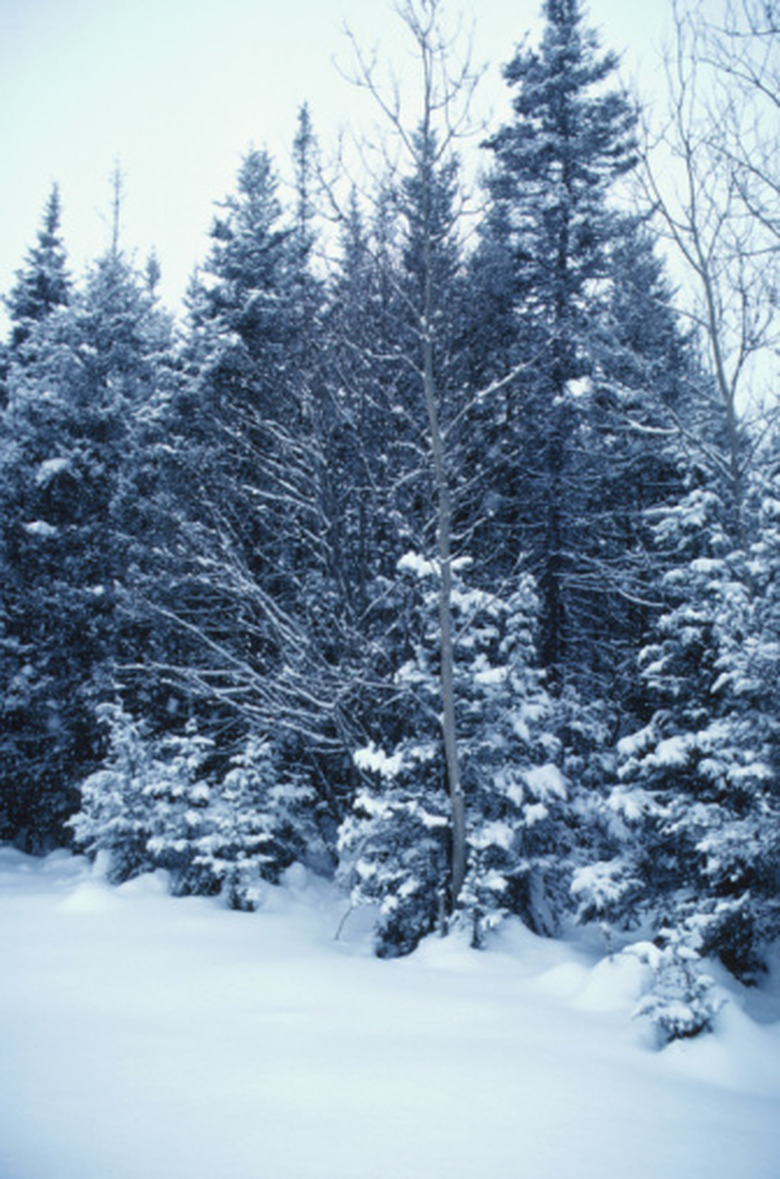How Fast Does The White Fir Tree Grow In A Year?
The white fir tree is an evergreen specimen and one of the chief sources of the Christmas trees that reside in homes through December. Widely utilized in urban landscaping as an ornamental tree, the white fir grows at a modest pace. Gardeners wishing to grow their own Christmas tree will have to wait several years.
Rate of Growth
The white fir (Abies concolor) is also called a concolor fir and grows at a slow to medium rate. According to the Arbor Day Foundation, a slow rate of growth denotes a tree that grows 12 inches or less each year, while medium growth describes between 13 and 24 inches annually. Based on these calculations, you can expect the white fir to grow somewhere between 1 and 2 feet a year.
Mature Size
The white fir claims a light-colored bark and produces needles that are a combination of silver, blue and green. Its rate of growth will see it achieve a mature height of at least 50 feet accompanied by a spread of 20 feet. The cultural environment in which the white fir tree is planted may dictate how fast it grows in a year. It prefers full sunshine mixed with partial shade.
- The white fir tree is an evergreen specimen and one of the chief sources of the Christmas trees that reside in homes through December.
- The white fir (Abies concolor) is also called a concolor fir and grows at a slow to medium rate.
Environment
The white fir thrives in U.S. Department of Agriculture hardiness zones 4 through 7, an area that encompasses the colder sections of the U.S. The tree will grow more slowly over the course of a year's time if it is forced to grow in the more southern or desert locales of the country. It demands conditions that are cool and moist with soil that is rich and well drained. The natural range of the tree is the Sierra and Rocky mountains.
Pests and Disease
Somewhat drought tolerant and able to withstand high levels of alkaline in the soil, the white fir will grow nicely as an ornamental tree in cooler sections of the Midwest and East. Like all plants, a variety of pests and disease can slow the rate of growth the tree experiences each year. Flatheaded fir borers, fir engravers, bark beetles and needle midges are among the insects that can weaken the vitality of the tree, while armillaria root rot is a severe disease of the fir.
- The white fir thrives in U.S. Department of Agriculture hardiness zones 4 through 7, an area that encompasses the colder sections of the U.S.
- The tree will grow more slowly over the course of a year's time if it is forced to grow in the more southern or desert locales of the country.
